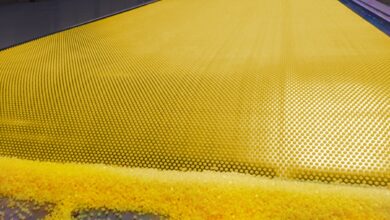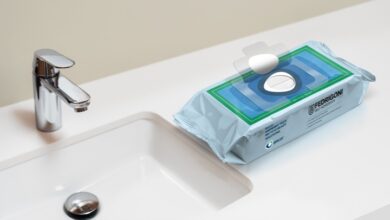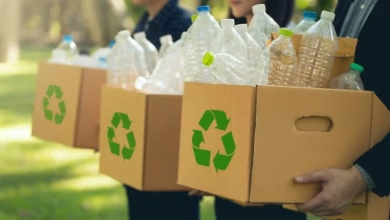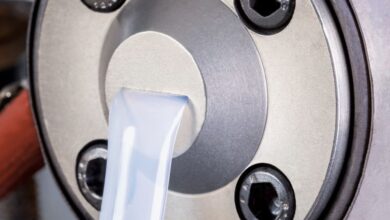PET bottle life cycle and NIR heating technology
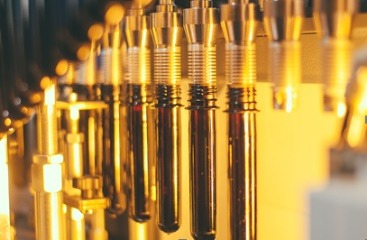
Iranpolymer/Baspar The global PET containers market is expected to grow annually at 5.3% CAGR between 2022 and 2023. It will increase from USD 73,1Bn to USD 122, 4 Bn, according to the Future Marketing Insights report. More than 500 billion PET bottles are used globally to pack different products. Unlike other types of plastic, PET is 100% recyclable.
NIR radiation is applied to various stages of PET bottle lifecycle: from pallets and preform injection to bottle blow molding and its recycling. The global trend to switch to rPET contributes to it.
IR radiation & thermoplastic polymers
PET, or plastic #1 according to recycling symbol, is a thermoplastic polymer belonging to the polyester group. It is fully recyclable and widely used to produce bottles for beverages and jars for food, containers for vegetable oil and vinegar, household chemicals and cosmetics.
Polyethylene terephthalate is often recycled into fibers, sheets, fabrics and definitely in new PET packaging. In natural state, the resin is colorless, semi-crystalline, highly flexible. Once processed, it can be semi-rigid and rigid.
Being thermoplastic polymer, heat impact leads to its softening and deformation. In bottle manufacturing, a PET preform once heated and passed to the mold, takes the shape of the latter. Thus, it is difficult to overestimate the importance of the heating system of reheat PET stretch blow molding machine and lamps in particular.
Infrared lamps emit a wide range of frequencies. There are 3 types of infrared radiation:
- Wave number near infrared with frequencies of 2500-714 nm (4000-14,000 cm-1)
- Wave number mid infrared with frequencies of 25 000-2500 nm (400-4000 cm-1)
- Wave number far infrared with frequencies of 2 500 000-25000 nm (4-400 cm-1)
NIR lamps & bottle blow molding
Different wavelengths interact with different compounds in different ways. Each type is defined either by the source of light to trigger an interaction between constituent wavelengths and compounds present in the sample, or the electromagnetic spectrum field analyzed. IR and NIR Spectroscopy both fall into the latter category.
Both IR and NIR Spectroscopy use spectral data to characterize matter. The main difference is the field of the electromagnetic spectrum studied. NIR Spectroscopy focuses on the 714 nm to 2500 nm range. This is just outside the range normally visible to the naked eye.
Found in the 19th century, the near infrared energy found its industrial application only in the mid-20s century. Is was used as add-on unit for other optical devices. In the 21st century its application expanded to PET stretch blow molding. PET Technologies is among the leaders in the field.
Near infrared radiation perfectly penetrates PET and reheats PET preforms. In fact, the radiation in the NIR range can penetrate the PET samples completely to a depth. Beer-Lambert Law is the main principle and the basis for the different methods of spectrophotometry, including NIR spectroscopy. According to it, the amount of light absorbed by a sample (in our case, it is PET preform) is directly related to the volume of sample the light passes through and the concentration of the sample.
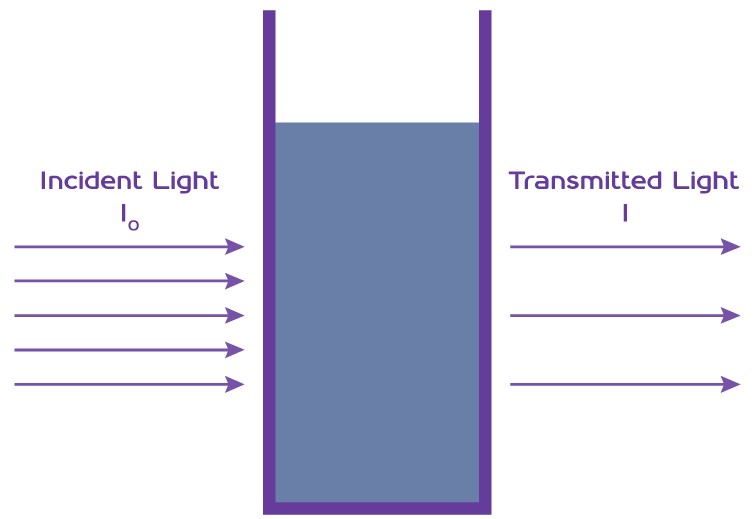
The importance of NIR technology is difficult to overestimate for manufacturing of such PET bottles as:
- Asymmetric bottles;
- Refillable / returnable bottles;
- Hot fill bottles;
- Cylindrical bottles at high speed;
- Color PET bottles
The heating process is faster in comparison with the conventional infrared (IR) system. It reduces energy consumption and permits to design a smaller (shorter) heater of the PET stretch blow-molding machine. The equipment has smaller footprint and is easier to transport.
Case study
PET Technologies with 24 years of experience in the industry was among the first companies that adapted NIR heating to the linear PET stretch blow molding machines. The innovative series of blow molders APF-Max is among the first SBM machines of linear type where it was implemented!
It is compact and has a user-friendly concept. The machine has high output while its dimensions are more compact.
The advantages of NIR heating system for PET bottles production:
- Uniform temperature distribution between the inner and outer parts of preform wall
- Reduced heating time
- Compact heater size
- Reduced energy consumption of blow molder.
Automatic temperature regulation is on the top of the story.
NIR radiation & recycling
There is a range of controversies regarding the use of colored (of any other color but for transparent and transparent blue) PET bottles. They have been banned by law in India and South Korea. There are similar discussions in other countries.
In contrast, the European PET Bottle Platform Technical Committee states that transparent colored PET bottles should not be banned. They increase the total value of PET bottle recycling.
Near Infrared (NIR), in combination with optical sorting, is an efficient and quick way to sort PET bottles automatically by color. Once sorted they are 100% recyclable and reusable for different applications. Additional sorting by individual color (e.g., green or amber) is also possible. It additionally increases the rPET value.
NIR & rPET
Finally, this recycled PET bottle is used again to produce a new PET bottle. This can repeat unlimited number of times. They are both eco-friendly and transparent, resistible and flexible. Recycled PET uses 79% fewer greenhouse emissions and less energy than the virgin one.
Some other environmental benefits it has:
- Up 50% less energy is consumed for its production;
- Eliminates plastics wastes;
- Less water is used for production;
Still, not all blow molding machines are capable to process preform from rPET due to the technical limitations. They come from the properties and characteristics of the material. Some of the reasons why not all machines are capable to process it:
- Material properties (melt flow, crystallinity, molecular weight);
- Wear and tear (rPET contains impurities that cause additional wear of blow molding machine components);
- Melt temperature and thermal stability (rPET requires higher processing temperature due to its molecular changes during recycling).
The whole model range of the reheat stretch blow molding machines developed by PET Technologies is compatible with rPET. Already implemented projects in Europe and Asia, Africa, North and Latin America are a proof.
The role of NIR heating system in bottles blow molding from rPET preform increases with the percentage of recycled content in the sample.
industrysourcing



